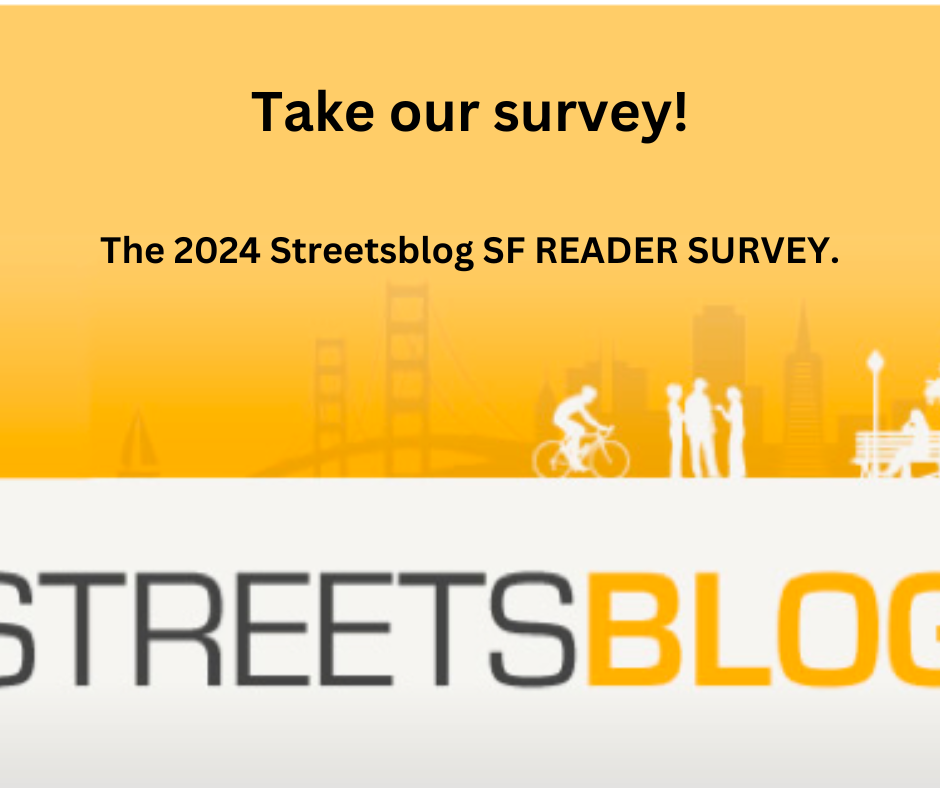SPUR Offers a Bold Bike Path Proposal for the Embarcadero
11:35 AM PDT on October 14, 2009

It would someday rank among the world's most beautiful bike paths. Imagine a separated, 2.5-mile bicycle path between the northbound traffic lanes of the Embarcadero and the pedestrian promenade from AT&T Park to Fisherman's Wharf. Not only would it provide a safe and dignified passage for cyclists, it would cut down on bike and pedestrian conflicts that occur on the shared sidewalk. Sound like a fantasy? Not so, according to a study sponsored by SPUR, which suggests that not only would the path serve an important transportation function, it would attract tourists and locals alike.
The study's goal was to examine the feasibility of a wide, comfortable, car-free facility capable of serving cyclists well enough to attract bicyclists away from the pedestrians on the promenade and provide safe and convenient bicycling to fast and slow riders alike. The path would eventually connect to other links in the Bay Trail, providing a car-free beltway, so to speak, around the city on the shores of San Francisco Bay and the Pacific Ocean.
The plan was crafted by a summertime fellow sponsored by the Patri family of architects and urban designers. The Patri Fellow, Carrie Nielson, with the help of staff from the design firm EDAW/AECOM and the Port of San Francisco, looked at various alternatives and settled on the idea of a two-way, 15-foot wide cycle track using space captured from the northbound bicycle lane, parking, and the sidewalk. Her research found that it's feasible, simple in some places, complicated and expensive in others. Total cost is estimated at $10-20 million.
Gabriel Metcalf, SPUR Executive Director, was enthusiastic about the potential of the path. "This is potentially one of the most transformative ideas out there for making the bicycle a primary mode for more trips in San Francisco. Compared to building infrastructure for cars or trains, bike infrastructure is cheap." He called for a more serious planning effort to nail down the cost and ensure there are no fatal flaws.
 The Hudson River Greenway provides a glorious 15.5-ft. wide path (with 3 foot shoulders) the length of Manhattan.
The Hudson River Greenway provides a glorious 15.5-ft. wide path (with 3 foot shoulders) the length of Manhattan. In a way, the project is the first step in correcting a planning mistake from the early 1990s. Then, planners of the new Embarcadero Roadway debated whether to include bike lanes or a bayfront bicycle path as part of their design. The Bicycle Transportation Advisory Committee - a self-appointed precursor to today's BAC - advised the planners, "we want both." "You can't have both. You have to choose," the planners said. The BTAC eventually settled on the current design: bicycle lanes in the roadway and no prohibition against bicycling on the promenade. Because bicycle transportation advocacy was dominated by proponents of vehicular cycling, the decision was not a hard one at the time. There was no way advocates would sacrifice on-street bike lanes for a sidepath of dubious safety and convenience.
Times have changed. The Embarcadero Promenade/Herb Caen Way is crowded with pedestrians and bicycling on it has become less tenable. Planners, meanwhile, have improved sidepath design and bicycle advocacy has become more inclusive of people who seek pathways as refuge from cars and as a necessary facility to attract seniors and children to routine urban bicycling.
Nielson's work has sparked a welcome public debate about the alternatives for improving bicycle transit and safety along the Embarcadero, according to the Port's David Beaupre, who said he applauded her efforts to identify issues and alternatives for creating a bicycle path along the Embarcadero.
The pathway seems like a real possibility, but there are plenty of challenges.
The design presumes the loss of the northbound bike lane, increasing the importance of the 15-foot width so that fast-moving cyclists can pass meandering tourists. The southbound bike lane will be preserved, and fast recreational cyclists will of course be permitted to use the roadway, which could be adorned with stencils to remind motorists that bicyclists may be expected in the roadway despite the path.
 The Embarcadero today, and what it would look like after.
The Embarcadero today, and what it would look like after. Intersections will be dangerous if they are not very carefully designed. Most will have to be signal-controlled, and parking on the piers should be limited to reduce the number of driveways. The proposed cruise ship terminal at Piers 27-31 includes a massive driveway that could pose a serious hazard to cyclists.
A railing between the southbound half of the bike path and the roadway will have to be designed to protect bicycle riders while not blocking the views of Embarcadero motorists.
Politically, the challenge is finding the funding and compensating for the loss of parking entailed with the proposal. Nielson's analysis indicated the need to remove 145 parking spaces on the northbound roadway, but found where 178 parking spaces could be added by converting the parallel parking on the adjacent streets to back-in angle parking. Unless a citywide leader (say, a Mayor) brokered a deal, the Port would lose substantial meter revenue which the MTA would gain by this transfer of parking location.
Despite the challenges, Nielson's proposal makes it clear that a wide, comfortable, car-free bike path is feasible, provided it gets the necessary funding and political support.
Stay in touch
Sign up for our free newsletter



